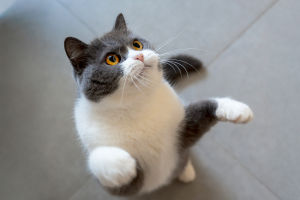Have you ever felt a wave of calm wash over you as your cat curls up beside you and starts to purr?
That gentle, rhythmic rumble isn't just a sign of contentment—it's also a remarkable biological mechanism with healing properties that benefit cats and potentially even humans.
Beyond its soothing charm, cat purring is a complex, natural therapy rooted in science. Let's dive into the fascinating reasons why cats purr and how this seemingly simple behavior serves as a powerful therapeutic tool.
The Science of the Cat's Purr
Purring is not just a cute noise; it's a controlled, vibrational phenomenon produced by cats through rapid contractions of the laryngeal (voice box) muscles. These contractions cause the vocal cords to separate and produce a consistent sound frequency that ranges roughly between 25 and 150 Hz. What's truly astonishing is that these frequencies align closely with those used in medical therapies designed to stimulate healing in skeleton, muscles, and soft tissues.
1. Cat laryngeal muscles twitch rapidly, creating a rhythmic purr during both inhalation and exhalation.
2. The purr's frequency range matches those proven to aid in physical healing in humans and animals.
3. This self-generated vibration could be a low-energy way for cats to trigger tissue repair and pain relief.
This means that purring is not only a vocalization but a physical phenomenon that may promote recovery from injury or stress.
Purring as a Self-Healing Mechanism for Cats
Cats purr in many situations, not just when they're happy. For example, cats often purr when they're injured, anxious, or even giving birth. Researchers believe this is because purring helps cats calm themselves, relieve pain, and repair damaged tissues.
1. The vibrations encourage faster healing of skeleton and tendons, reducing inflammation and swelling.
2. Purring releases endorphins—natural painkillers—that help cats manage discomfort and stress.
3. This healing "therapy" may explain why cats often recover quickly from injuries that would take longer in other animals.
In fact, it's thought that cats have evolved purring as an energy-efficient way to stimulate their own recovery without excessive movement or energy expenditure.
How Purring Benefits Humans, Too
Beyond helping cats, the frequency and soothing nature of purring also affect human listeners positively. Many cat owners report feeling less stressed and calmer when their cats purr nearby.
1. Studies suggest that the frequencies of purring can lower human blood pressure and reduce stress hormone levels.
2. The calming sound promotes relaxation, which supports mental well-being and emotional comfort.
3. Purring may even aid in physical healing for humans, as vibrational therapy with similar frequencies is used in medical settings.
According to Dr. Elizabeth von Muggenthaler, a bioacoustician specializing in animal sounds, "Our research indicates that frequencies within the range of a cat's purr, specifically between 25 and 50 Hertz, can have therapeutic effects on skeleton and tissue, and may contribute to lowered stress levels and blood pressure in humans."
So when your cat sits on your lap and purrs, it's not just a sign of affection—it might be giving you a gentle, health-boosting massage from the inside out.
The Deeper Meaning Behind Purring
While the healing properties are fascinating, purring also serves communicative and emotional roles in the cat's life.
• Cats use purring to signal safety and social bonding, often encouraging closeness with humans or other animals.
• Purring can express contentment, but also subtle pleas for help or reassurance when a cat is unwell or stressed.
• This versatility makes purring a key part of the human-cat bond, enhancing empathy and connection.
Recognizing that purring is both a coping mechanism and healing tool can deepen your understanding of your cat's needs and emotional state.
How to Appreciate and Support Your Cat's Purr
Next time your cat curls up and starts to purr, remember this sound is multifaceted—combining communication, self-care, and healing. Here are some ways to respond wisely:
1. Create a calm, safe environment where your cat feels comfortable purring naturally.
2. Spend quiet time together to encourage bonding, which often triggers more frequent and relaxed purring.
3. Observe changes in purring patterns—increased or distressed purring may signal your cat needs attention or veterinary care.
4. Enjoy the moment and let the soothing vibrations bring calm to both of you.
Purring embodies a blend of nature's ingenuity and feline emotion—a tiny miracle your cat shares every day.
Have you noticed your cat purring louder when you're both relaxed, or perhaps when they seem a bit under the weather? These gentle hums might be their way of healing themselves and comforting you in return. Share your experiences with cat purring—the moments when that soft vibration transformed your day or reminded you of your pet's remarkable resilience. Sometimes, the simplest sounds hold the deepest secrets.


